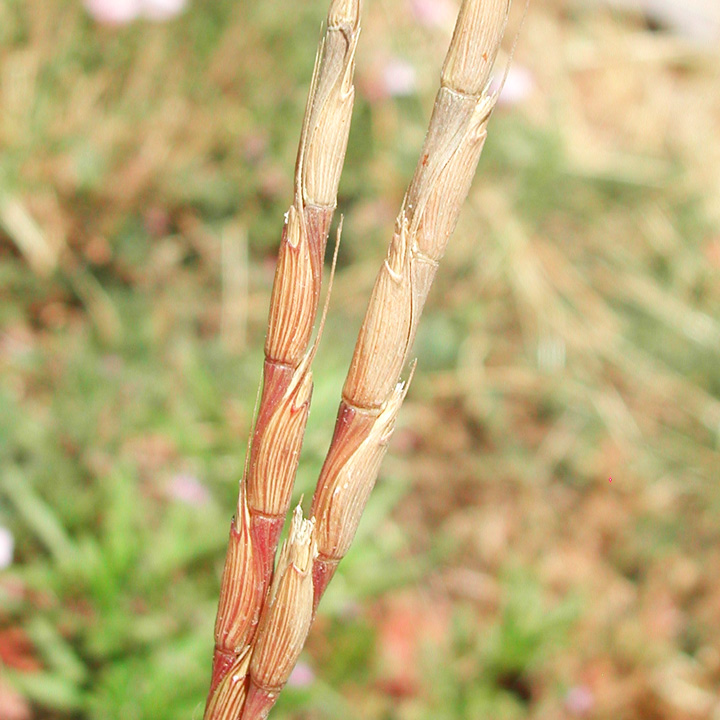
|
Family: Poaceae |
Sandra M. Saufferer. 2007. Flora of North America vol. 24 Plants annual. Culms 14-80 cm, usually glabrous, erect or geniculate at the base, with (1)2-4(5) nodes. Sheaths open; auricles ciliate;ligules 0.2-0.8 mm, membranous, truncate; blades 1.5-10 mm wide, linear to linear-lanceolate, flat, spreading. Inflorescences terminal, spikes, with 2-13 spikelets, usually with 1-3 rudimentary spikelets at the base; disarticulation either at the base of the spikes or in the rachis, the spikelets falling attached to the internodes above or below. Spikelets solitary at each node, 1/2-2(3) times the length of the internodes, tangential to the rachis, appressed or ascending, upper spikelet(s) sometimes sterile; fertile spikelets 5-15 mm, with 2-7 florets, distal florets often sterile. Glumes ovate to rectangular, rounded on the back, scabrous or pubescent, with several prominent veins, midveins smooth throughout, apices truncate, denticulate, or awned, sometimes indurate at maturity; lemmas rounded on the back, apices toothed, frequently awned; paleas chartaceous, 2-keeled, keels ciliate; anthers 3, 1.5-4 mm, not penicillate; ovaries with pubescent apices. Caryopses lanceolate to lanceolate-ovate. x = 7. The name is derived from from the Greek aigilops, a word which has multiple etymological interpretations [see Slageren 1994, pp. 19-20 and 118-119], including wild oats and several variants related to the Greek aigos, goat. Aegilops has about 23 species and is native from the Mediterranean region to central Asia, as well as in the Canary Islands. It is sometimes included in Triticum, because the two form natural hybrids and both are involved in the evolution of the cultivated wheats, including Triticum aestivum. They are treated as distinct genera here, in keeping with past practice and their differing ecological attributes, Aegilops being a weedy genus. Four species are established in North America north of Mexico; only Aegilops cylindrica is widespread. The introductions occurred at the end of the nineteenth or beginning of the twentieth century. Three other species have been collected in North America, but are not known to have persisted. Spikelets 2-5-fld, turgid, borne flatwise singly and fitting closely into alternate hollows on 2 sides of the rachis, the joints thickened and exposed at the top, the whole spike compact and cylindrical, at maturity breaking off at the base or disarticulating into joints; glumes indurate, many-veined, not or scarcely keeled, 2-4-toothed at the truncate tip, 1 or more of the teeth sometimes produced into an awn; lemmas rounded on the back, indurate above, the veins not convergent, toothed at the truncate summit, one or more of the teeth often prolonged into an awn; caryopsis furrowed on the back, hairy at the top; annual grasses with flat lvs. 15, Medit. reg. and w. Asia. Gleason, Henry A. & Cronquist, Arthur J. 1991. Manual of vascular plants of northeastern United States and adjacent Canada. lxxv + 910 pp. ©The New York Botanical Garden. All rights reserved. Used by permission. |
This project was made possible in part by the Institute of Museum and Library Services [MG-70-19-0057-19].
Powered by Symbiota



